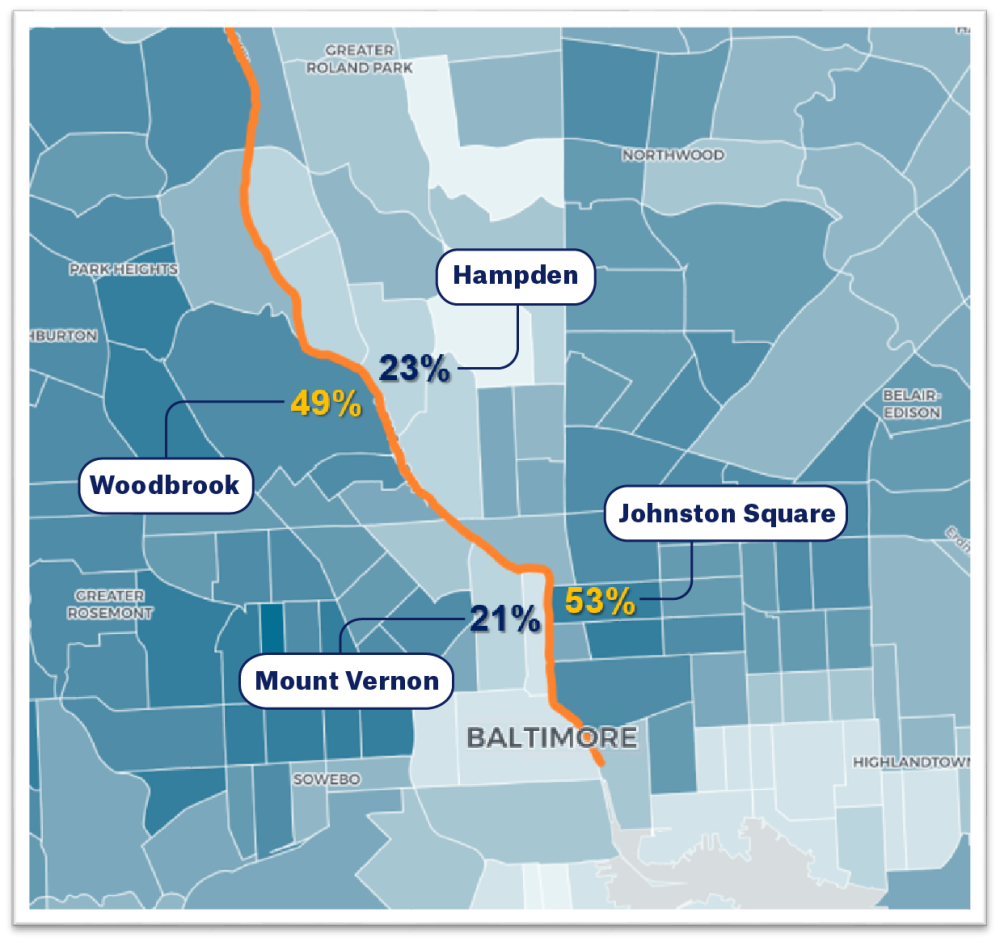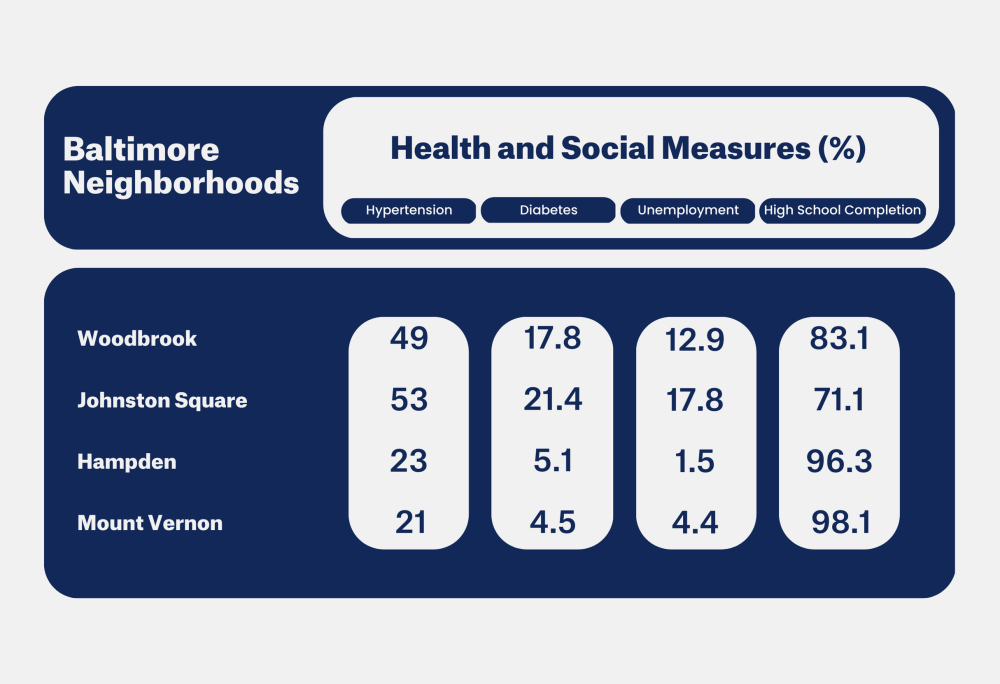Health Equity Blog Series: Overcoming Historical Barriers to Neighborhood Health Equity
Mar. 9, 2023
Shoshanna Levine & Jacqueline Betro
When it comes to health, the zip code where you live matters just as much, if not more, than the genetic code inside your body. But what does this actually mean, and why is it important when we talk about health equity? The numbers in your zip code do not actually mean much on their own. But they are an expression of the way we draft our policies, implement our programs, or build our cities, which can have substantial, deeply felt impacts on local communities. These impacts, however, are not felt equally among residents living in different neighborhoods, and, importantly, they can last for generations. Let’s look to Interstate-83, also known as the Jones Falls Expressway, in Baltimore, MD to illustrate this point.
In a story familiar to many cities across the U.S., Interstate-83 was built in 1975, as part of a decades long, national initiative to expand the interstate highway system. Planners of the interstate highway system routed some highways directly, and sometimes purposefully, through Black and brown communities. Though redlining and racial zoning had formally ended decades earlier, these roads were built right on the same boundary lines that were used to discriminate against and exclude Black residents from homeownership and lending programs. In other cases, white community members explicitly asked highway builders to create a physical barrier between their community and what they saw as “encroaching Black communities.”
In Baltimore, many of the barriers facing communities today go back to a 1910 ordinance explicitly prohibiting Black and white residents from living in the same neighborhoods and institutionalizing policies of racist lending and redlining from banks and federal loan programs. While the ordinance was struck down by the Supreme Court in 1917, many of the patterns of segregation set in 1910 (and before) can still be seen today in where Black and white communities live and the health outcomes within these communities.
A highway runs through it
Digging deeper, we can look at a map of high blood pressure (HBP, aka hypertension) in Baltimore with the Expressway highlighted (in orange in the map below). High blood pressure is an important risk factor for heart disease and stroke, two of the leading causes of death in the United States. A clear pattern emerges in the map, even just at first glance. Digging into four neighborhoods, we can see that residents living on either side of I-83 but just across the street from each other experience hypertension very differently. In Woodbrook and Johnston Square, 49% and 53% of residents, respectively, have high blood pressure, while in Hampden and Mount Vernon, just 23% and 21% of residents, respectively, have high blood pressure. That is less than half of the rate of HPB in neighborhoods separated only by a highway.

These patterns are also seen in related health outcomes, such as diabetes, as well as in factors that drive health outcomes, such as high school completion and unemployment rates, as can be seen in the table below. These neighborhoods with higher blood pressure rates also tend to be more low-income and have higher concentrations of Black residents, compared to their whiter, more affluent counterparts across the Interstate. This is a pattern of health and economic disparities replicated in downtowns across the U.S., deepened by highways that destabilize neighborhoods and decrease access to support and medical care.

Finding a way forward
The redlining policies of the 1930s, as well as the building of the interstate highway system in the 1950s and beyond, created geographic segregation that has led to the health disparities and wealth gaps people are experiencing to this day, more than 60 years later. On a local level, policies and programs addressing racism and poverty in the community can help move the needle on rates of disease and health outcomes. Check out the ones listed below, which come from the City Health Dashboard’s Take Action page.
Local actions must be complimented by larger scale policies aimed at remedying the harms of centuries of racist policies at every level. These deep-rooted problems need comprehensive solutions that get to the source of the issue at a national scale, such as the Biden infrastructure plan which is one attempt to address racism in transportation – more is certainly needed.
Start by exploring what heart health looks like in your city and find potential connections to the past through resources like Mapping Inequality.